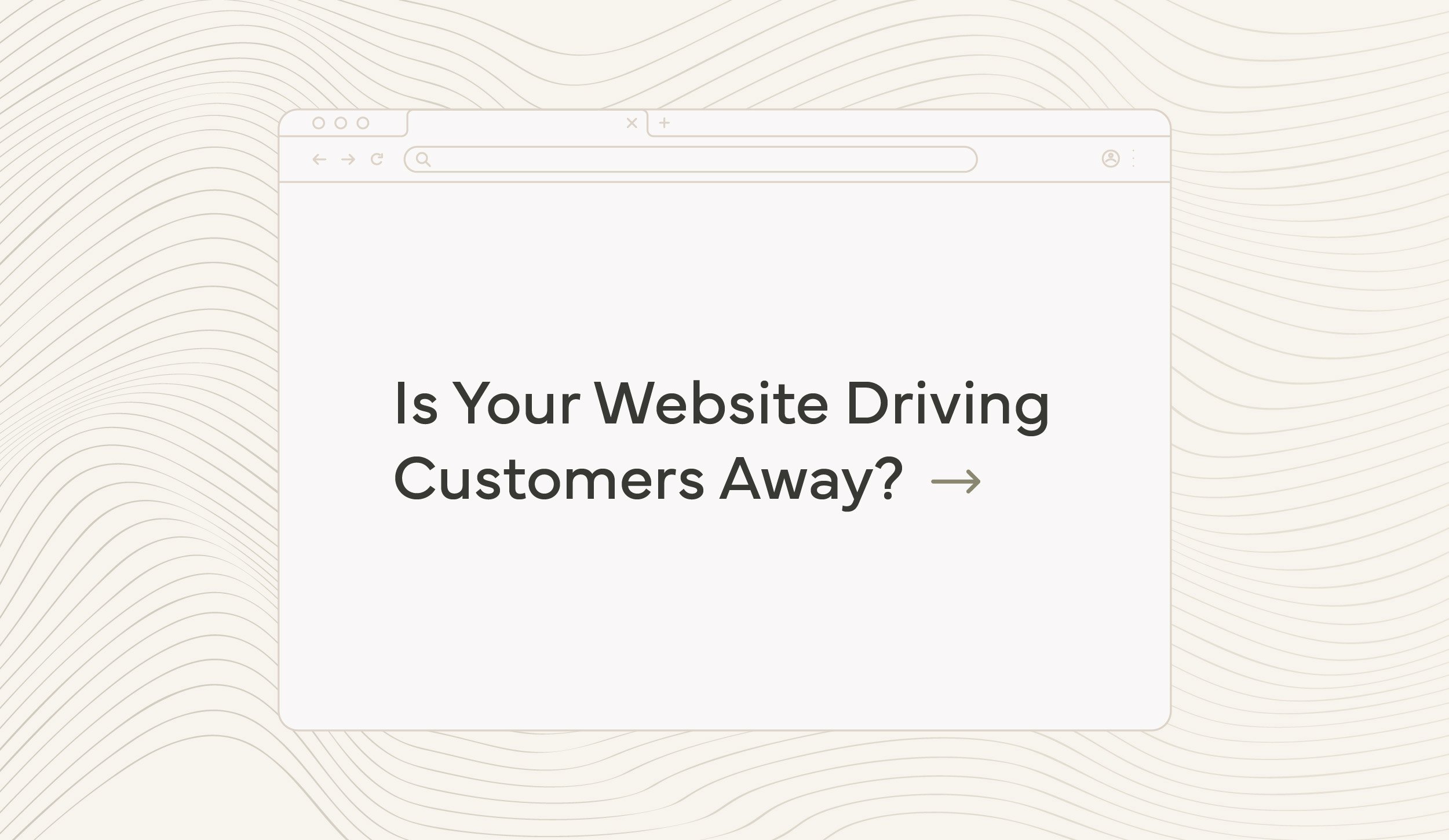BLOG Is Your Website Driving Customers Away?
Is Your Website Driving Customers Away?
POSTED BY Danielle Holmes | Nov 7, 2022

Your website is a client's first impression of your company. So if your analytics show a dip in traffic, your website might need vital changes. Let’s take a look at what you can do to prevent that!
How do you know if your website is driving people away?
There are two easy ways to tell if your website is driving people away:
- Customers are finding you from every channel but social media
- Your website bounce rate is high
Track How Your Customers Found Your Product
Knowing how your customers found your product or service gives you important information:
- Where your customers spend their time - social media vs web searches vs off the grid
- Where to increase your marketing budget
- Where to change your marketing strategy
There are easy ways to track customer origin. Google Ads and Facebook Ads track ad views and purchases. You can add campaign tracking codes to landing pages. And you can go old school and send out a customer survey or ask your customers where they found you. If the answer isn’t your website, it’s time to dive into your website analytics and see if people are visiting your website.
What is a Website Bounce Rate?
“Bounce rate is a website statistic that involves the number of times a person has come to your site and left immediately without clicking on another page.”
Where to Find Your Bounce Rate
If your website is set up with Google Analytics or HubSpot Reporting, you should be able to see your bounce rate. In HubSpot you can find bounce rates in Traffic Analytics. To get there, go to Reports>Analytics Tools>Traffic Analytics>Pages. And once under pages, you can filter to look at specific pages on your website.
For Universal Google Analytics, go to Audience Overview Reports>Audiences>Overview. This should show your bounce rate.
For Google Analytics 4, you actually have to use engagement rate, from the engagement report, to figure out a page’s bounce rate. To find the engagement rate go to Acquisition>User Acquisition and Acquisition>Traffic Acquisition reports. Once you know your engagement rate, subtract it from 100% and that’s your bounce rate.
What is an Optimal Bounce Rate?
Once you’ve figured out your bounce rate you need a comparison. Is 10% bad? Is 50% awful? According to Hubspot, an optimal bounce rate is 26-40%. You can expect this to be closer to 40% on blogs. And that’s because if someone visits your blog, reads the whole thing, and leaves the site, it counts as a bounce, even if they spent a significant amount of time reading.
We love a tool like Hotjar to see if your audience is actually reading the whole post.
Now that you’ve confirmed your website isn’t driving new customers, let’s get to what may be driving your potential customers away.
Website Elements That Drive Customers Away
Your Website is Designed for Desktop Mobile
More than 50% of all online traffic comes from mobile users. So, no matter how stunning your desktop design is, it’s crucial to have a website that’s also optimized for mobile. We love Llano’s website, which uses mobile first design AND has a stunning desktop site.
There’s No White Space
Just like a home, a cluttered website can feel overwhelming to a user. We recommend a content edit to see if you really need ALL that copy and all those modules. Less is more when it comes to appealing to users.
Navigation is Complicated
You want the fewest steps between landing on your website and a purchase. If your navigation is complicated or CTAs aren’t obvious, a user may opt to leave your site and find another business. Clear navigation is key. Say yes to these three navigation elements:
- A website search bar
- A navigation menu
- Fewer than five main items in your main navigation
- A comprehensive sitemap
Copy and Visuals are Confusing or Outdated
If you can’t remember the last time you updated your website copy, it’s overdue. Start with a content audit.
How to Do a Content Audit
- Grab a piece of paper or open a Google Doc and start on your home page
- Make a note of any copy that doesn’t reflect your current brand
- Annotate any outdated photos
- Go through every page on your website
Once you’ve done a content audit, use this process to overhaul your copy!
You Forgot Call to Actions
Every website should have a goal. Usually this looks like:
- Selling a product or service
- Getting in contact with your business

And if there aren’t ample opportunities to get in contact with you or make a purchase, your bounce rate will be high. Effective CTAs will be obvious, in more than one place on your website, and have clear text. We recommend a balance of clear button copy like, “Learn More” and emotionally driven copy like, “Plan your dream wedding with us!”
The ultimate user experience
Your website is the face of your business. It’s the first impression of your brand for potential customers. Making changes and providing an engaging user experience will drive traffic and sales.
At Primitive, we want to see your business flourish and it all starts with your website. From copywriters to web designers and developers, our team are experts at what they do.
SHARE THIS POST:

About the writer, Danielle Holmes
Danielle has been telling stories her whole life. And for the last five years she’s been telling the stories of entrepreneurs, small businesses, and companies bringing quality products and services to customers. Danielle got her start in academia. With degrees in English and anthropology, she spent more than half a decade learning how to ask questions, tell stories, and do thorough research. Her approach uses ethnographic interview and coding techniques to better understand brands and clients. She listens for key words, recurring topics, and core ideas to know the client and their ideal audience. She uses that data and understanding to tell stories—true to brands—that create loyal customers.
